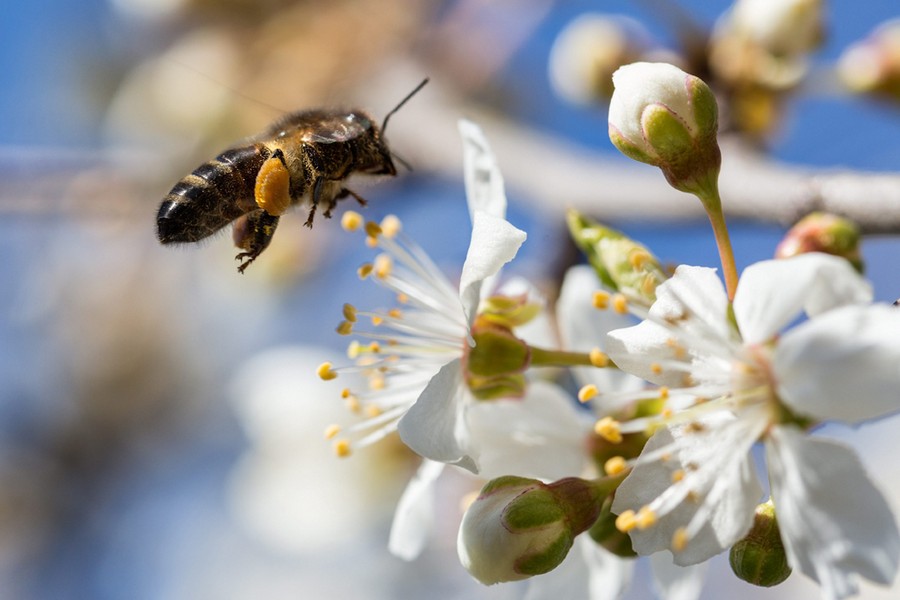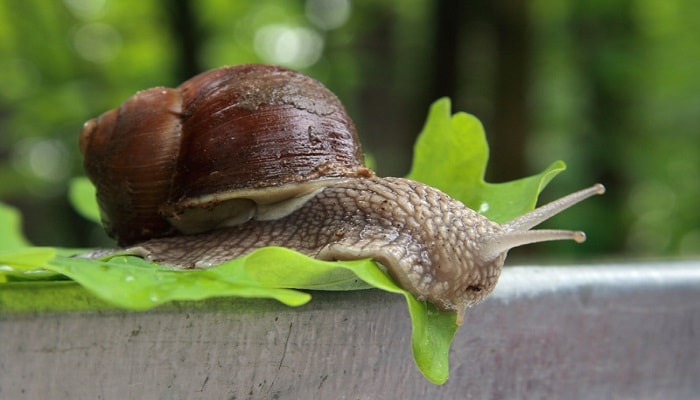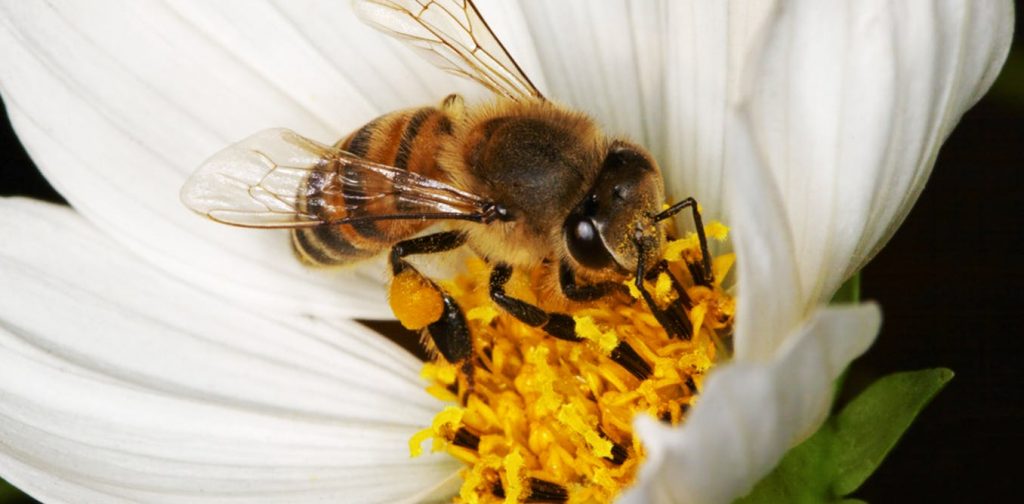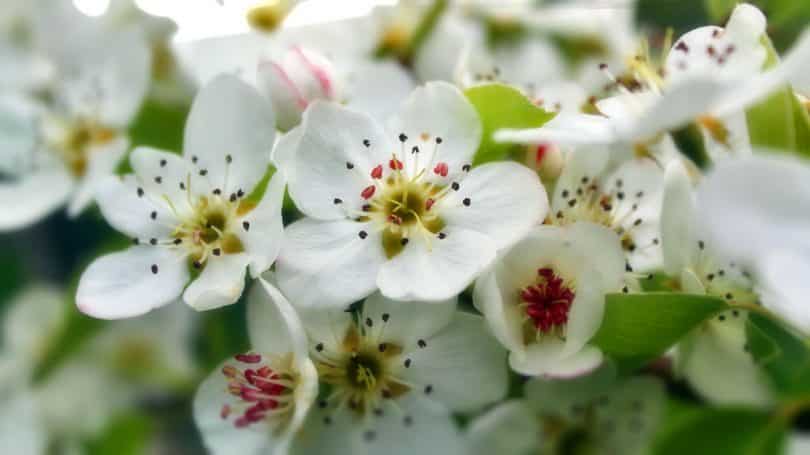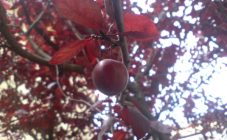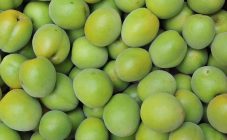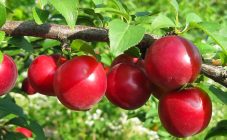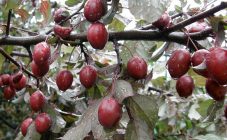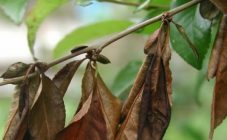Content:
Very often you can hear from amateur gardeners that fruit trees do not bear fruit. There are usually several reasons for this. Often, stone fruit trees are planted on estates, which do not have a periodicity of fruiting. Therefore, they cannot produce crops on their own every year. Next, we will consider the types of reproduction, answer the questions whether the plum needs pollinators, and how to organize abundant fruiting with our own hands.
Pollination is
For many trees, pollination is an important process for fruiting. At its core, it is necessary for plants to reproduce. In scientific terms, this is the transfer of pollen accumulated in the anther to the ovules (for gymnosperms) or to the pistil (for angiosperms).
The pistil is the female part that promotes the development of the seed if fertilization is successful and the stamen is male. Moreover, the process is necessary for the further formation and development of the seed base.
There are several types of breeding:
- Autogamy is also called self-pollination. To pollinate, trees need their own pollen;
- Allogamy or cross-pollination.
This type can have several subtypes:
- Monoecious;
- Dioecious.
Allogamy is characterized by the presence of a pollinator, which will transfer pollen from the stamen to the pistil.
Depending on the performer, cross-pollination can also be of the following types:
- Transport by Living Organisms - Biotic Pollination:
- Pollinating insects: bee, wasp, in rare cases, butterfly, ants, beetles and even flies. Flower pollen grains are large and sticky. Certain plant species have bowl-shaped flowers. This speeds up the reproduction process, because insects that have flown in will surely get dirty with pollen;
- The transfer is carried out by vertebrates - these are birds, bats, rodents, lemurs;
- Reproduction by human hands is an artificial type of pollination.
Certain plant species can be pollinated, thanks to the snails as pollinators.
- Abiotic pollination:
- The wind can pollinate plants - anemophilia. This type is typical for cereals and most deciduous trees. The pine tree is pollinated by a similar type;
- Hydrophilia is the transfer of pollen grains by water. Suitable for aquatic crops.
According to statistics, the biotic type is characteristic for 80% of the varieties, with the help of the wind 20% reproduce.
- Neighboring pollination is geitonogamy. A type in which pollen from the stamen of one flower is transferred to the stigma of the pistil of another. This applies to cultures of the same kind.
Crop pollination process
What gardener does not know that the harvest and its quality characteristics directly depend on pollination. Everyone knows the fact that this process is directly dependent on insects. For the most part, honeybees are responsible for the reproduction of plants, because without them one can not expect high fertility from fruit crops and berries.
The plum orchard is directly related to stone fruit crops. To a greater extent, the varieties are self-fertile, and only cross-pollination of plums will allow us to expect decent yields. To this end, for pollination of an ordinary Hungarian, you need to plant the Renklod variety. A good yield multiplied by several times can be obtained by properly organizing a garden plot for bees. Similarly, the cherry plum, the blackthorn belonging to the plum genus and apple trees are pollinated.
Insects are the best pollinators for plums and other fruit and berry crops.Insects are attracted by the smell and bright color of the flowering. A flower scent is felt over a long distance, helping to find the desired object, it is more important than a bright color. All this makes it possible for pollinators to find a food source; when the necessary amount of nectar is released, bees will return more than once.
The independent collection of nectar and pollen, characteristic of bees, is equally important for pollination. The pollen is needed by insects to feed the larvae and to excrete wax. It doesn't matter whether the bee takes honey or pollen, the main thing is to visit the plants regularly. The structure of the bodies of bees, bumblebees and wasps makes it possible to carry a large amount of sticky pollen, which is necessary for the process of pollination of plums and other crops. To understand how plums are pollinated, you need to take a closer look at the whole process.
The essence of pollination is that ripe grains of pollen from a burst anther should fall on the stigmas of the pistil of the same or another plant and germinate in the future. The seedling grows to the pistil column and fertilizes the free ovule. Such reproduction is a combination of masculine and feminine principles: pistils and stamens. All this means that the transfer of grains is necessary for further propagation.
In a day, insects are able to fly around hundreds of fruit trees and bushes, carrying out their pollination. Visiting flowers is the process of transferring seeds and replenishing other types of pollen. By transferring pollen mixtures from one plant to other species, bees cross-pollinate with the selection of grains suitable for the variety.
Conditions conducive to pollination
Cold harms the stamen, heat reduces the susceptibility of the pistil. At temperatures below 11 degrees, insects refuse to fly out of the houses. Temperatures above 30 degrees also stop insect pollination of plants. Warm days with bright sunshine are considered favorable for collecting nectar and pollen. In such conditions, a large amount of nectar is released, and pollen grains ripen faster. If the fruit ovary is low, the fruits are small and not fully formed, it means that flowering took place in damp and cool weather conditions. Rain and wind are not desirable for pollination.
Artificial pollination technique
Plum is a cross-pollinated hand crop. With self-pollination, these varietal plants produce low-quality seeds, barren flowers develop from them, which then simply fall off. Plum is a bisexual plant, and nature in every possible way opposes the self-pollination of culture. The pistils and stamens of plum blossoms develop in different periods, which means that there is a need for cross-pollination.
There is a method that will show you how to pollinate your home plum yourself. This will require natural pollinators: bees, wasps and bumblebees. The gardener is only required to ensure that insects visit his site.
First of all, you need to remove all obstacles to the spread of the bloom scent in order to attract insects. For pollination of plums by hand, you can prepare a feed mixture. Take a liter of boiling water, dissolve a kilogram of sugar in it, leave to cool. Next, add a few flowers of the plant that requires pollination, in this case a plum, to the mixture. All insist during the night. Then place the bait in small portions throughout the area, not far from the sinks.
The presence of water containers on farmsteads is dangerous for bees, because they drown in them. You need to worry about covering all water sources. The bait should also be kept in small quantities, preferably in wide containers. To prevent the death of pollinators, moss is sure to fall on the bottom.
Pollination time is not the best period for updating and painting the site. The scents of colorful materials overpower the floral scent and repel insects. Another deterrent factor is considered to be the smoke of fires; it is better not to burn anything during the flights of bees, bumblebees and wasps.
